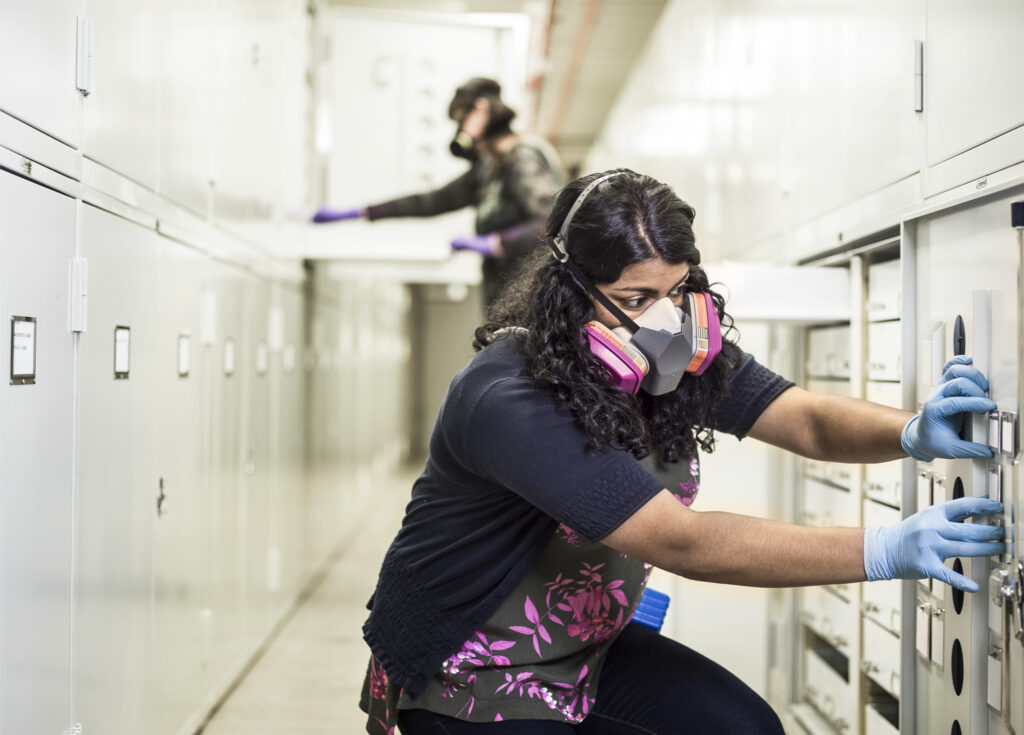NASA Thermal Coatings Engineer Nithin Abraham
<span class="attachment-description-p">A technology that has shielded some of NASA’s highest-profile space observatories from potentially harmful molecular contamination is now being evaluated as a possible solution for protecting the Smithsonian Institution’s cultural artifacts and natural-science specimens. </span><span class="attachment-description-p"> Under a Space Act Agreement with the Smithsonian Institution’s National Museum of Natural History, Nithin Abraham, a thermal-coatings engineer at NASA’s Goddard Space Flight Center in Greenbelt, Maryland, and museum conservators are testing the effectiveness of the patent-pending Molecular Adsorber Coating, or MAC. Goddard engineers originally created the technology to entrap outgassed molecular contaminants so that they couldn’t adhere to sensitive instruments and components. </span><span class="attachment-description-p"> Above, NASA Thermal Coatings Engineer Nithin Abraham removes samples treated with a patent-pending adsorber from specimen-storage cabinets at the Smithsonian’s Museum Support Center in Suitland, Maryland, a sprawling storage facility that holds more than 54 million collection items. </span> Credits: NASA/Goddard/Chris Gunn
A technology that has shielded some of NASA’s highest-profile space observatories from potentially harmful molecular contamination is now being evaluated as a possible solution for protecting the Smithsonian Institution’s cultural artifacts and natural-science specimens.
Under a Space Act Agreement with the Smithsonian Institution’s National Museum of Natural History, Nithin Abraham, a thermal-coatings engineer at NASA’s Goddard Space Flight Center in Greenbelt, Maryland, and museum conservators are testing the effectiveness of the patent-pending Molecular Adsorber Coating, or MAC. Goddard engineers originally created the technology to entrap outgassed molecular contaminants so that they couldn’t adhere to sensitive instruments and components.
Above, NASA Thermal Coatings Engineer Nithin Abraham removes samples treated with a patent-pending adsorber from specimen-storage cabinets at the Smithsonian’s Museum Support Center in Suitland, Maryland, a sprawling storage facility that holds more than 54 million collection items.
Credits: NASA/Goddard/Chris Gunn


